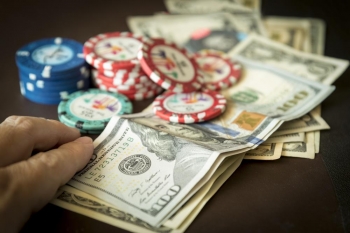6 Beginners Bankroll Strategy Tips

Bankroll management remains one of the top strategies to stay profitable in the game of poker. It continuous to be one of the most ignored aspects in the game despite how simple it is to follow. Here are the six main aspects to keep your bankroll healthy.
Determine bankroll size
From what you earn and spend on a monthly basis, what percentage of that would you be OK to lose within your month´s poker play? You have to be completely comfortable about losing this money in order to keep emotions in check. Players that don´t plan this ahead tend to get chicken legs as the stakes grow higher and all of a sudden their decision making is not as sound.
Stake size
It is recommended to plan for 25 to 30 buy-ins to protect against unexpected swings. This is obviously the worst case scenario. As an example, if you are playing $1/$2 cash games, and the buy-in is $200 for each session, then you should have $5,000/$6,000 set aside as a stake. If you like to play on a weekly basis on $100 tournaments, then you need $2,500 to $3,000 each month.
Advanced methods for poker bankroll are management charts. These are a sort of cheat sheet that tell you how much your stake size should be depending on your win rate. They are easy to understand and professionals use them.
Stay at your level
Don´t get greedy. You might see yourself as a better player than the other folk at the lower stakes tables, and you might be right in terms of acquired skill but you need to wait until that bankroll slowly grows before upgrading to higher stakes. Many players spend 3 months raking up $3k and decide to move into a $1k buy-in tournament only to lose most of what they gained in one single game. Patience plays a big role in bankroll management.
Track results
Very few players do this, and there is actually bankroll tracking software that helps you record all types of results. Most professional players are using them, so not taking advantage of this leverage is a weakness. You learn a lot from revising wins and losses. To begin with, create a spreadsheet with a date in column 1, buy-ins in column 2, and profit/loss in column 3. For tournaments make sure to subtract any tips. Also include a column for notes for anything that was an “aha!” moment or a lousy mistake.
The purpose of this data record is to answer the question “how are you doing over time?” The answer should be numerical and in percentages. Up 10%, or down 8%.
Additional costs
Maybe less important but keep them in mind if they are constant and stack up. These include gas to the casino, cost of new tech and software specified for playing online poker, interest rates in credits, food and drinks etc. This is important if you realize your spend on amenities and gadgets is suddenly higher than the investment on your bankroll. Minimize it if winnings are definitely not covering them.




